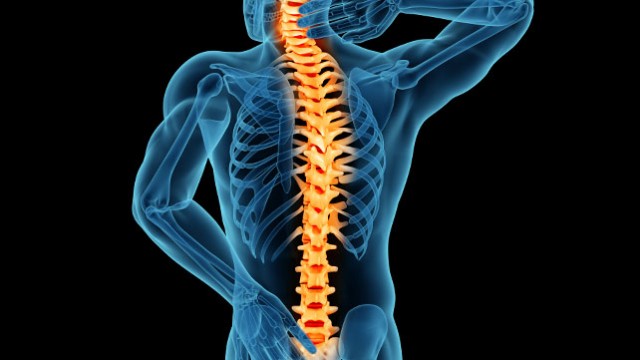
What is Spinal Stenosis
Stenosis is a condition whereby the spinal canal narrows. The spinal cord passes through the spinal canal. The narrowing results into “choking” of nerve roots and spinal cord. Narrowing of the spinal canal occurs slowly over an extended period of time due to the degeneration of the facet joints and the intervertebral discs. At times, the facet joints may enlarge and lead to inflammation. All these effects results to a decrease in the diameter of the hole through which the spinal cord travels, triggering the spinal cord and the associated nerves to be “pinched”.
Another factor that triggers spinal stenosis is stiffening of the spinal column ligaments, in most case the ligamentum flavum.
Where Stenosis May Occur
The disorder occurs in several areas such as the central stenosis-which occurs in the central spinal canal which is the location of the cauda equina.
Foraminal stenosis- it occurs in the lateral foramen where the nerve roots exit through from the body.
Lateral recess-In the main tract specifically at the point at which nerve roots leave the central canal.
The Causes of Spinal Stenosis
The major contributor to spinal stenosis is the slow degenerative process of the spine. As people age, the spinal ligaments tend to calcify and thicken compromising the adjacent organs or tissues. With time bones and joints enlarge because of bone stress leading to bone spurs that eat into the spine’s space.
Over a long period of time, the spinal discs between vertebrae get dehydrated and lose their normal height. Injuries can lead to more disc narrowing. Osteoarthritis; the most common type of spine arthritis and mostly occurs in older and middle-aged people. This is a very chronic degenerative process of the spine. Mostly it happens due to the day to day wear and tear of joints. In some cases, it is related to the overgrowth of bone or bone spur formation.
This disorder commonly occurs in both males and females aged 50 years and above. However, it might also affect younger people who maybe suffer a spinal injury or spinal canal narrowing.
The Symptoms of Spinal Stenosis
Spinal stenosis symptoms vary depending on some factors like the level where stenosis occurs, how severe the stenosis is and sensitivity of your nerves. Some of the symptoms include:
Claudiaction-a certain type of pain in a person’s legs and it increases as a person stands or walks for longer periods
General pain in the back, buttocks or hips
Pain that radiates down to the thigh, calf or foot
Pain experienced either on one side or both sides at the same time
Experience weakness, numbness, cramping or needles sensations.
Spinal Stenosis Treatment
Each patient is treated independently depending how severe their symptoms are and the daily activities they carry out. These are the treatments offered:
A non-surgical treatment
This applies for moderate pain and it includes some medications, exercise programs and physiotherapy.
Back surgery (traditional)
The doctor might decide to perform spinal fusion or decompression. This is applied when a person fails to respond to the conservative forms of treatment.
Surgery that is less invasive
Mostly for moderate or severe pain and decompression is achievable using this method. A good example of a less-invasive surgery is the interspinous spacers.
How Physiotherapy Helps Patients
Apart from these, a person can go for physiotherapy which has several benefits such as:
Manual therapy aids in loosening stiff muscles and joints allowing more mobility of the spinal vertebrae
Exercises can practise exercises that tend to flex the back which increases the opening of the spinal canal
Observing the right postures brings relief from the pain for example a person should always practise having a flexed posture
If you are in pain get in contact with a chiropractor applecross to begin your journey to healing.
